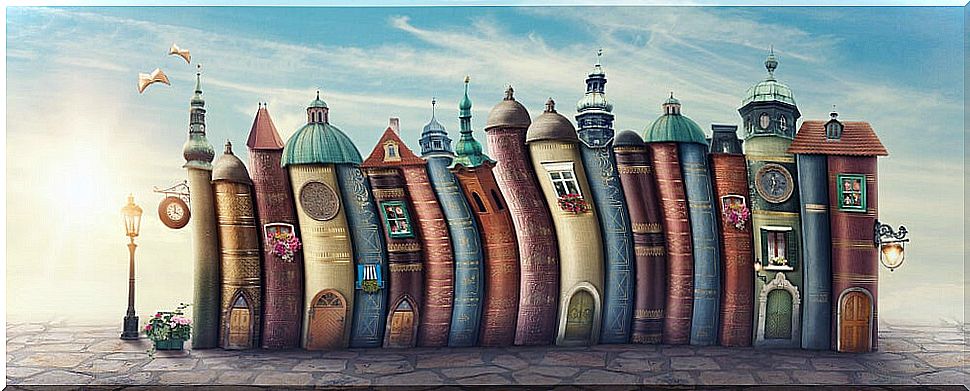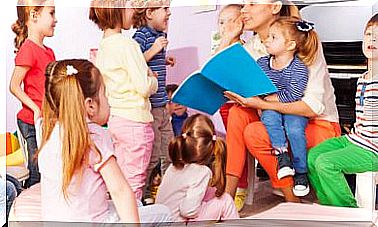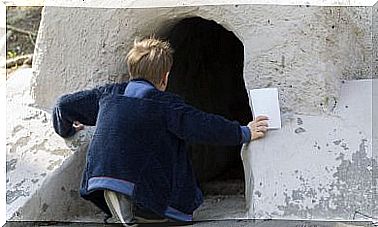Story Therapy In Child Development

Story therapy can be a wonderful therapy for every child’s development. In fact, today the technique has been perfected so much that it is already used even with adults or children with problems.
This therapeutic technique is used, above all, to work with children who show behavioral or cognitive problems. However, it is no longer limited to this segment, as we have commented.
What is story therapy?
Child therapy through stories has shown great effectiveness in all types of children, as it allows the prevention of future problems, as well as a broad development of emotional intelligence and education in values.
Using the stories, we approach the child and his inner world from a more empathetic point of view. With this technique it is easier to speak their language and language, understand their symbols and also have great moments with them. Thus, emotional ties are strengthened and promoted while the boy develops his personality and his relationship with his social and environmental environment.

Coined by the Murcian psychotherapist Lorenzo Antonio Hernández Pallarés, this technique has been implemented throughout the world for more than two decades with considerable success. In fact, the Ibero-American Association of Story Therapists has been created to expand the values and benefits of story therapy.
In the words of its own founder and creator, we could speak of a healing technique through stories. The therapy is used to prevent, but also to heal, enhancing the personal growth of children and adults, with special emphasis on children with problems such as autism, dyslexia, Asperger’s or ADHD.
Hernández Pallarés understands stories as maps of consciousness and psychology that help the message received by the subconscious to become conscious. Therefore, this tool, complemented with other therapies, addresses very deep symbolic aspects.
What does this therapy work
This therapy works with children using three types of stories that, by Hernández Pallarés’ own classification, are divided into three large groups that will be used according to the purpose sought:
- Emosemic stories : they are those that transmit and produce emotions. They are usually the most illustrated. Many of them are published today.
- Monosemic tales: these tales offer a particular message. In this case, we find many examples that come from philosophy, from Hinduism to Zen, Sufi, etc. Others, such as those written by Jorge Bucay, would enter this classification.
- Polysemic tales : in this typology we find very varied meanings. We locate the fantastic stories that create imaginary worlds, the classics inherited through tradition and the collective subconscious, etc.
The polysemic story is the most useful for story therapy. It is due to its symbolism and the varied and humanly rich legacy it brings. Therefore, its aspect based on warning, learning and the transmission of experiences is greater, more interpretable and very complex.

The classic tale and the polysemic tale
The classic tale has been passed orally from parent to child for several centuries, adapting to each age in purpose and language, but with a more enduring message. This is transmitted through symbols until it reaches the unconscious.
The polysemic tale, for its part, reaches the magical and symbolic heart of the child. That is why it is so important, especially in the preoperative stage, as Jean Piaget called it. And it is precisely this symbolic and magical language that is used in therapy to get to the bottom of the child’s problem, analyzing two levels:
- Interpsychic or interpresonal level : each character acts as a mirror of their own personal relationships with parents, siblings, friends, etc.
- Intrapsychic or intrapersonal level : each character and symbol in the story represents various aspects of oneself.
The benefits of story therapy
Here’s a look at the many benefits of this story-packed therapy:
- Increase the creativity of the child.
- Educate in good values.
- Promotes great emotional and cognitive maturity.
- Show your little one the pleasure of reading.
- Encourage the imagination.
- Promotes healthy communication.
- Cheer on guys during their worst moments.
- It serves to support disorders eradication therapies.
- Teaches ways to solve problems.
- Improve children’s social relationships.
- It maintains the relationship of the adult with his childhood self.
Story therapy is an excellent therapy that supports the treatment of all kinds of disorders. In addition, thanks to the stories, the little ones promote their imaginative and creative capacity.










